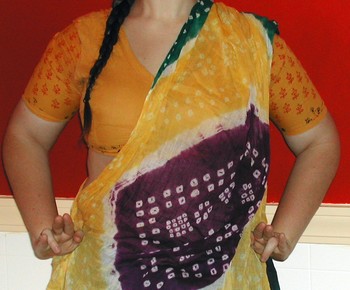Visnudharmottarapurana: Nṛttahastas (Dance hands (single and combined))
400 CE - 500 CE - by None
Nṛttahastas - Dance hands (single and combined)
Visnudharmottarapurana - Language: Sanskrit
This is an encyclopedic work that covers a vast amount. It includes information on a variety of topics including Vaishnaiva rituals. With 3 different Khandas, the most interesting for our purpose is volume 3 - the section includes a variety of arts - music, dance, painting, sculpture and architecture.
Descriptions and Meanings
26:71
Two Katakamukha hands, at a distance of eight fingers from the chest and with their elbows and shoulders in the same level and facing forward are called Caturasra.
26:72
The two Haṁsapaksa hands, turned like a palm-leaf fan, should be known as Udvṛtta or Tālavṛntaka.
26:73
When two Caturasra hands are given the shape of Haṁsa-paksa and obliquely turned with palm upwards, they must be known as Laghu-mukha.
26:74
The two Arāla hands, loosened on wrists, should be known as Arāla Khaṭakamukha in acting.
26:75
Two hands with the elbows curved and the palm of the hands bent upwards are called Āviddha.
26:76
When the two Sarpa-sira hands, with their heads spread obliquely are in the pose of Svastika, they should be known as Sūcī-mukha.
(there is no Sarpasirsa in this text)
26:77
Whpn the Haṁsa-paksa hands move upwards and the palms are also spread upwards, they are called Recita.
26:78
When the left hand is Caturasra and the right hand is Recita, the scholars of Natya-tattva should know the pose as Ardha-recita.
26:79
When two Tripatāka hands are bent at the elbow and made slightly oblique the pose is called Avahittha.
26:80
When the two hands are loosened from the wrists it is called Pallava.
26:80
When two hands come out from the top of the arms (reaching the hips) they are called Nitamba.
26:81
The hands raised from the sides and acting on the shoulders are called Keśabandha. The acaryas have approved them.
26:82
Two hands lying on the side and extended obliquely, should be known as Latā, in the acting of Nrtta.
26:83
When the Latā-hand is raised and swing from side to side and the other hand is Khaṭaka, the combination is called Karihasta.
26:86
When the two hands are stretched, they are called Danḍa-pakṣa.
26:86
When the two hands are raised high and move round, they are called Urdhva-maṇḍala, due to the change of guru or region.
26:87
When the two arms are placed on the sides they are called Pārśva-maṇḍala.
26:87
When the hands cover half (of the chest and half of the sides), they are called Uromaṇḍala.
26:88
When both the arms are in the shape of Svastika and placed on the wrists, they are famous as Svastika and also well-known as Prakīrṇaka.
26:89
When both of them are in the form of Padma-Kośa, they are called Padma-Kośa.
26:89
When the fore-parts of both the hands are enclosed, they should be known as Alapallava.
26:90
When they are raised, extended and curved they are called Ulvana.



